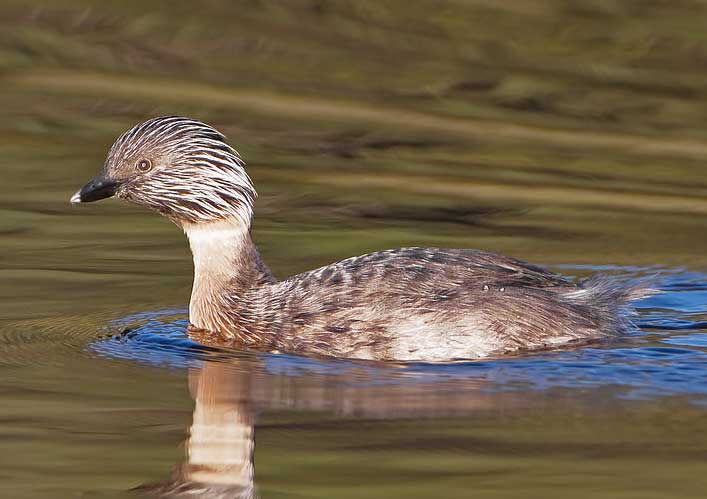
Poliocephalus poliocephalus (*)
Superregnum: Eukaryota
Cladus: Unikonta
Cladus: Opisthokonta
Cladus: Holozoa
Regnum: Animalia
Subregnum: Eumetazoa
Cladus: Bilateria
Cladus: Nephrozoa
Superphylum: Deuterostomia
Phylum: Chordata
Subphylum: Vertebrata
Infraphylum: Gnathostomata
Megaclassis: Osteichthyes
Cladus: Sarcopterygii
Cladus: Rhipidistia
Cladus: Tetrapodomorpha
Cladus: Eotetrapodiformes
Cladus: Elpistostegalia
Superclassis: Tetrapoda
Cladus: Reptiliomorpha
Cladus: Amniota
Classis: Reptilia
Cladus: Eureptilia
Cladus: Romeriida
Subclassis: Diapsida
Cladus: Sauria
Infraclassis: Archosauromorpha
Cladus: Crurotarsi
Divisio: Archosauria
Cladus: Avemetatarsalia
Cladus: Ornithodira
Subtaxon: Dinosauromorpha
Cladus: Dinosauriformes
Cladus: Dracohors
Cladus: Dinosauria
Ordo: Saurischia
Cladus: Eusaurischia
Subordo: Theropoda
Cladus: Neotheropoda
Cladus: Averostra
Cladus: Tetanurae
Cladus: Avetheropoda
Cladus: Coelurosauria
Cladus: Tyrannoraptora
Cladus: Maniraptoromorpha
Cladus: Maniraptoriformes
Cladus: Maniraptora
Cladus: Pennaraptora
Cladus: Paraves
Cladus: Eumaniraptora
Cladus: Avialae
Infraclassis: Aves
Cladus: Euavialae
Cladus: Avebrevicauda
Cladus: Pygostylia
Cladus: Ornithothoraces
Cladus: Ornithuromorpha
Cladus: Carinatae
Parvclassis: Neornithes
Cohors: Neognathae
Cladus: Neoaves
Cladus: Mirandornithes
Ordo: Podicipediformes
Familia: Podicipedidae
Genus: Poliocephalus
Species: Poliocephalus poliocephalus
Name
Poliocephalus poliocephalus (Jardine & Selby, 1827)
Original combination: Podiceps poliocephalus
References
Illustrations of Ornithology 1 pl.13,text
Vernacular names
English: Hoary-headed Grebe
español: Zampullín canoso
français: Grèbe argenté
svenska: Gråhuvad dopping
The hoary-headed grebe (Poliocephalus poliocephalus) is a member of the grebe family. It breeds in southern parts of Australia; it winters throughout the island of Tasmania. The bird takes its name from the silvery-white streaking on its black head. It is common in Australia, with a population of about 500,000. Its habitat is similar to that of the Australasian grebe.
Description
The hoary-headed grebe is a fairly small dark grey and white grebe. It has a brown eye and a black patch under the chin, and a narrow black streak down the back of the neck. During the breeding season the adult's plumage has white streaks over its entire head, giving them the common name of hoary-headed grebe. Juveniles have a white chin and throat and a striped face.[2] Males have two plumage phases: after breeding they lose the buff breast and the white lines on the head, but can usually be identified then by the broad black bar down the nape.[3]
Distribution and habitat
The hoary-headed grebe is found in all states and territories of Australia. It is generally absent from the central arid regions of Australia.[4] The hoary-headed grebe is usually found away from the shoreline in large open waters, which may be estuarine, brackish or freshwater.[5] It can also be found in sheltered coastal seas.[6] It can sometimes be found in New Zealand, where it is much less common than Australia.[7]
Food
The hoary-headed grebe feeds on aquatic arthropods, mostly caught by deep diving. This species feeds during the day, and when the light is poor, forages mostly at the water surface.[8]
Breeding
Hoary-headed grebes breed from August to January. The nests are a floating platform of water weeds, similar to that of the Australasian grebe, and usually some distance out from shore among sparse reeds or other plants, anchored to and at least partly supported by them. A shallow depression on top is just slightly above water, so the eggs are lying in water or dampness. The eggs are concealed under pieces of wet vegetation when the incubating parent leaves so that the nest appears empty. Under full sun the covered eggs are warm and moist, often left unattended for some time. The egg's appearance is oval, white, and soon stained brownish ochre, while the clutch is usually 2–5 eggs. Incubation is 20–24 days and egg size is 39 x 27 mm.[9]
Conservation
0:42
SW Queensland, Australia
With a large range and no evidence of significant population decline, this species’ conservation status is of Least Concern.
References
BirdLife International (2016). "Poliocephalus poliocephalus". IUCN Red List of Threatened Species. 2016: e.T22696589A93572515. doi:10.2305/IUCN.UK.2016-3.RLTS.T22696589A93572515.en. Retrieved 13 November 2021.
"Hoary-headed Grebe ( Poliocephalus poliocephalus )". Ozanimals.com. Retrieved 7 November 2012.
Trounson, D.& M. (2008) Australian Birds: A concise Photographic Field Guide. Murray David Publishing, Smithfield, NSW ISBN 978-0-9752428-4-1
Pizzey, G. and Knight, F. (1997). Field Guide to the Birds of Australia. Angus and Robertson, Sydney. ISBN 0-00-219201-2
"Hoary-headed Grebe". Birds in Backyards. Retrieved 7 November 2012.
Flegg, J. (2002) Photographic Field Guide Birds of Australia. Reed New Holland, Frenchs Forest, NSW ISBN 978-1-876334-78-9
"Hoary-headed Grebe". Birdlife International. Archived from the original on 24 September 2015. Retrieved 2 February 2013.
Pizzey, G. and Knight, F. (1997). Field Guide to the Birds of Australia. Angus and Robertson, Sydney.ISBN 0-00-219201-2
Morcombe, M. (2003) Field Guide to Australian Birds: Australia's Most Comprehensive Guide. Steve Parish Publishing, Sydney.ISBN 9781740214179
Grebes of the World – Malcolm Ogilvie & Chris Rose ISBN 1-872842-03-8
Retrieved from "http://en.wikipedia.org/"
All text is available under the terms of the GNU Free Documentation License

